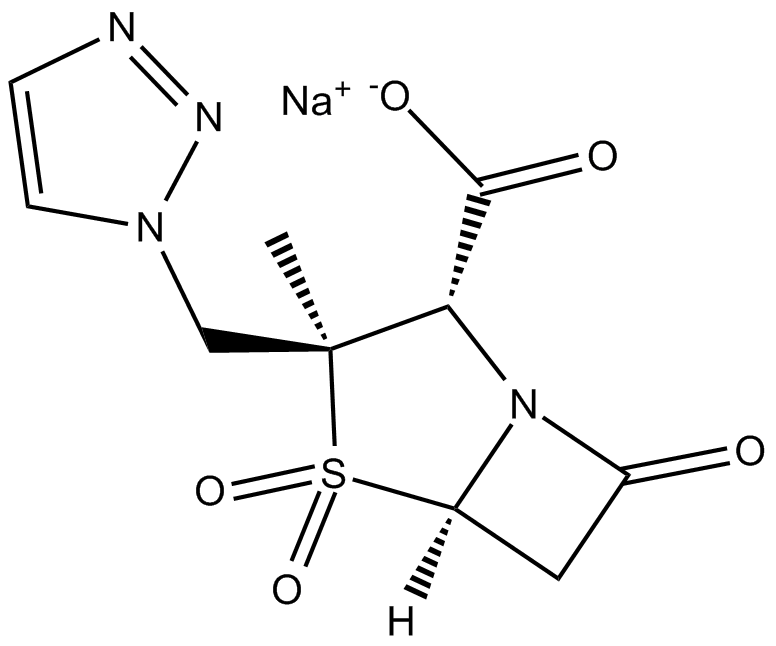Tazobactam (sodium salt) (Synonyms: CL-307579,YTR 830) |
| Catalog No.GC10366 |
Tazobactam (sodium salt) is an antibiotic of the beta-lactamase inhibitor class.
Products are for research use only. Not for human use. We do not sell to patients.

Cas No.: 89785-84-2
Sample solution is provided at 25 µL, 10mM.
Tazobactam is a β-lactamase inhibitor [1]. Tazobactam shows intrinsic activity against Acinetobacter strains.
The β-Lactamases are responsible for resistance to penicillins, extended-spectrum cephalosporins, monobactams, and carbapenems. In order to overcome β-lactamase-mediated resistance, β-lactamase inhibitors have been introduced into clinical practice [2].
Tazobactam alone showed an MIC of ≤ 8 mg/liter (range 2 to 32 mg/liter) against 29 of the 38 strains [1]. Tazobactam in combination with the ureidopenicillin, piperacillin successfully restored the activity of piperacillin against β-lactamase-producing bacteria [3]. Tazobactam exhibited inhibitory activity and protected piperacillin against Richmond and Sykes types II, III, IV and V β-lactamases, staphylococcal penicillinase and extended-spectrum β-lactamases [3]. Tazobactam showed species-specific activity against class I chromosomally-mediated enzymes [3].
Preliminary clinical data indicated that the fixed combination of piperacillin /tazobactam was effective in the treatment of moderate to severe polymicrobial infections, including skin, intra-abdominal and soft-tissue and lower respiratory tract infections [3]. Piperacillin/tazobactam in combination with an aminoglycoside was effective in the empirical treatment of fever in patients with neutropenia. In phase III trials, piperacillin/tazobactam showed a tolerability profile typical of a penicillin agent [3].
References:
[1] Higgins P G, Wisplinghoff H, Stefanik D, et al. In vitro activities of the β-lactamase inhibitors clavulanic acid, sulbactam, and tazobactam alone or in combination with β-lactams against epidemiologically characterized multidrug-resistant Acinetobacter baumannii strains[J]. Antimicrobial agents and chemotherapy, 2004, 48(5): 1586-1592.
[2] Drawz S M, Bonomo R A. Three decades of β-lactamase inhibitors[J]. Clinical microbiology reviews, 2010, 23(1): 160-201.
[3] Perry C M, Markham A. Piperacillin/tazobactam[J]. Drugs, 1999, 57(5): 805-843.
Average Rating: 5 (Based on Reviews and 5 reference(s) in Google Scholar.)
GLPBIO products are for RESEARCH USE ONLY. Please make sure your review or question is research based.
Required fields are marked with *




















